Marion Venners led a walk on Wednesday 19 October which started next to a ford over the River Lyde near Mill Farm at Hartley Wespall. The Lyde rises initially at springs in the Chalk aquifer to the east of Basingstoke, then flows northwards for about 20 miles, before joining the Loddon near the starting point of the walk. It was a mild morning with a strong easterly wind, with the temperature rising as the cloud cover cleared away. Wild Angelica, Hemp Agrimony, Gypsywort, Branched Bur-reed, Meadowsweet and stingless Nettles were found amongst the bankside vegetation. After crossing the footbridge next to the ford, the walk started out across two grassy pastures. Good numbers of the Yellow Fieldcap Bolbitius titubans were found. Initially bell-shaped and a shiny bright yellow, then became more flattened, a paler yellow and rather fragile. The River Loddon flowed in a deep channel at the far side of the second field. At one point, the trunk of a fallen tree had been positioned to block most of the channel, increasing the flow and washing clean the gravel below the obstruction. Water Forget-me-not and Water Figwort were in flower nearby and a Grey Wagtail flew across the field and paddled in a shallow stretch of the river. The footpath followed the river bank, then crossed over a footbridge. Hops scrambled through the bankside Hazels, pink Spindle berries hung over the water’s edge and Guelder-rose bushes were covered with waxy red berries. The next footpath led alongside a hedge at the edge of the Sherfield Oaks golf course. There were red berries on Black Bryony, black berries on Dogwood, an Artichoke Gall was found on an oak leaf and a number of Giant Puffballs were spotted at the base of a Blackthorn thicket.
The walk continued through Gravel Pit Copse where a wide variety of fungi were seen. Clumps of Bulbous Honey Fungus Armillaria gallica, with the stems tapering upwards from a distinctive bulbous base, were seen around some big Beech trees and Sulphur Tuft Hypholoma fasciculare was found nearby. Common Bonnet Mycena galericulata, with transverse ribs between the gills, was growing on fallen wood, while on the other side of the path, a pale Club fungus Clavulina sp was pushing up through the woodland soil. A row of tufts of Puffballs Lycoperdon sp marked the outline of a fallen branch. Small jelly-brackets on a fallen Ash trunk, with concentric zoning on the upper side and a wrinkled-jelly underside, were identified as Tripe Fungus Auricularia mesenterica. A distinctive fungus with an eccentric stem which was growing on a rotting stump was thought to be Blackfoot Polypore Polyporus leptocephalus. The route then led southwards along Wildmoor Lane, eastwards along a track past Wildmoor Farm, along the steep southern side of a deep sunken trackway and back over the River Loddon. The track crossed several grassy fields, most of which were closely grazed, but one had long rough grass and berry-laden hedges and at its far side, a Sparrowhawk flew along the tree line. A Common Polypody fern was growing on the next bridge, which spanned the River Lyde. The walk continued along the edge of another golf course, where a dragonfly was flying in the shelter of the tall hedge which bordered the path. The route then turned sharply back towards the north-west and followed a footpath along the field edge towards Summerstead Farm. A Bullfinch called from a dense section of hedge. After passing the farm buildings, the path crossed a grassy pasture which was bordered on the western side by the River Lyde. Yellow Fieldcap fungi started to be found again in good numbers, a clue that these fields were a continuation of the riverside pastures which had been crossed at the start of the walk. Flowering Greater Stitchwort was a surprise find at the base of a hedge and a flock of Redwings was seen. A footbridge crossed the River Lyde, giving access to a narrow patch of woodland on the west bank, where a row of enormous Poplars lined the river bank. They had trembling yellow leaves and several had dropped huge limbs. They were home to a number of different fungi, including some distinctive brackets. The footpath then crossed back over another footbridge to the fields on the east side of the river. The Splitgill fungus Schizophyllum commune, with distinctive branched gills, was found on the sawn end of a log by the riverbank. The final stretch of the walk crossed the fields back to the start. Most of the party then drove to Rotherwick for lunch at the Coach and Horses pub.
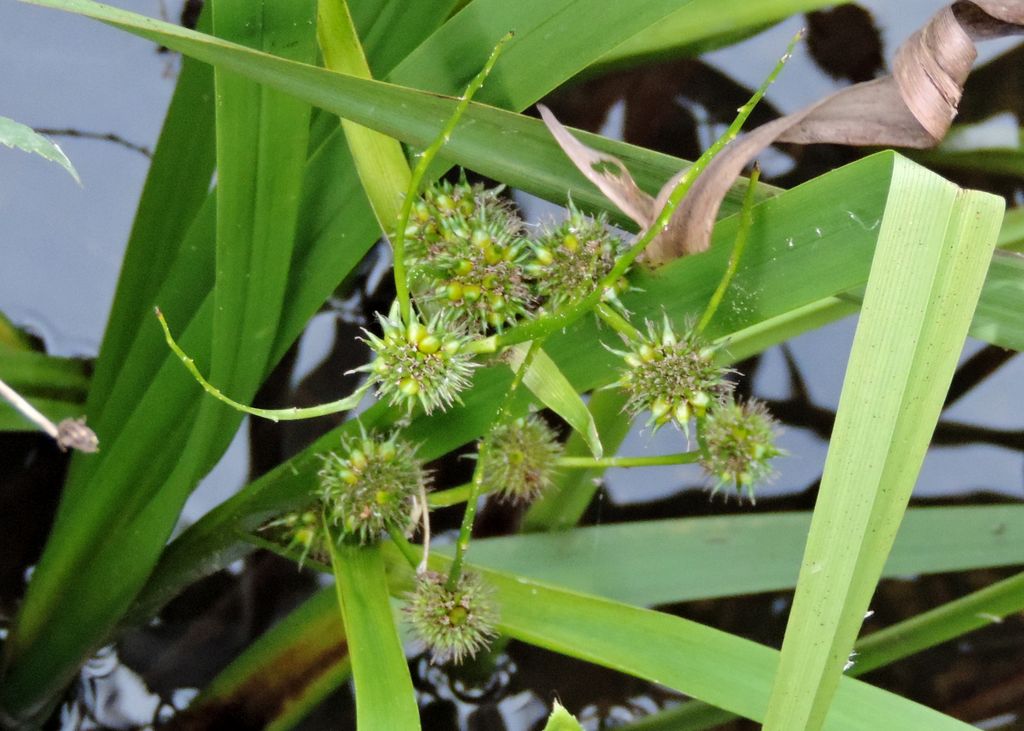
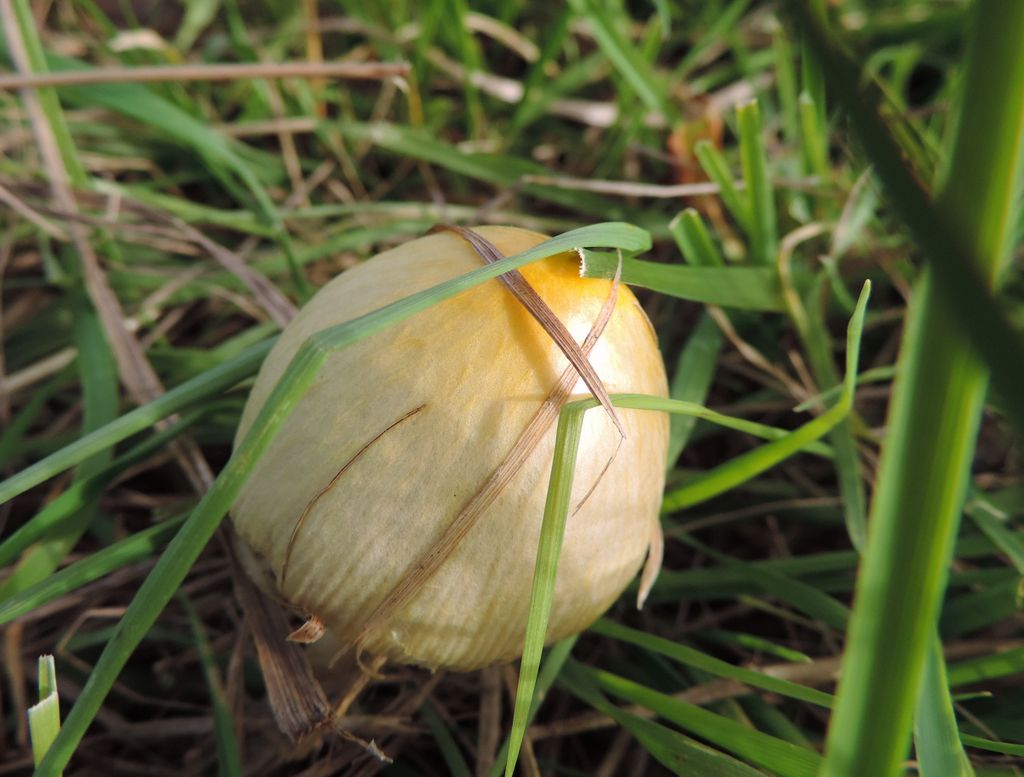
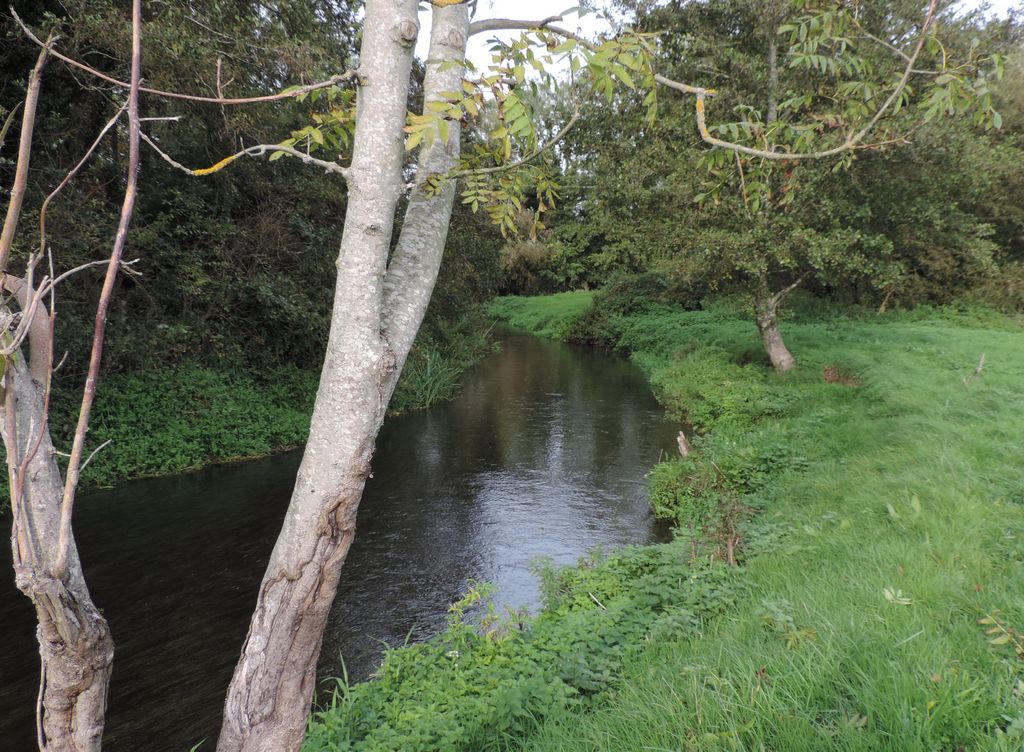
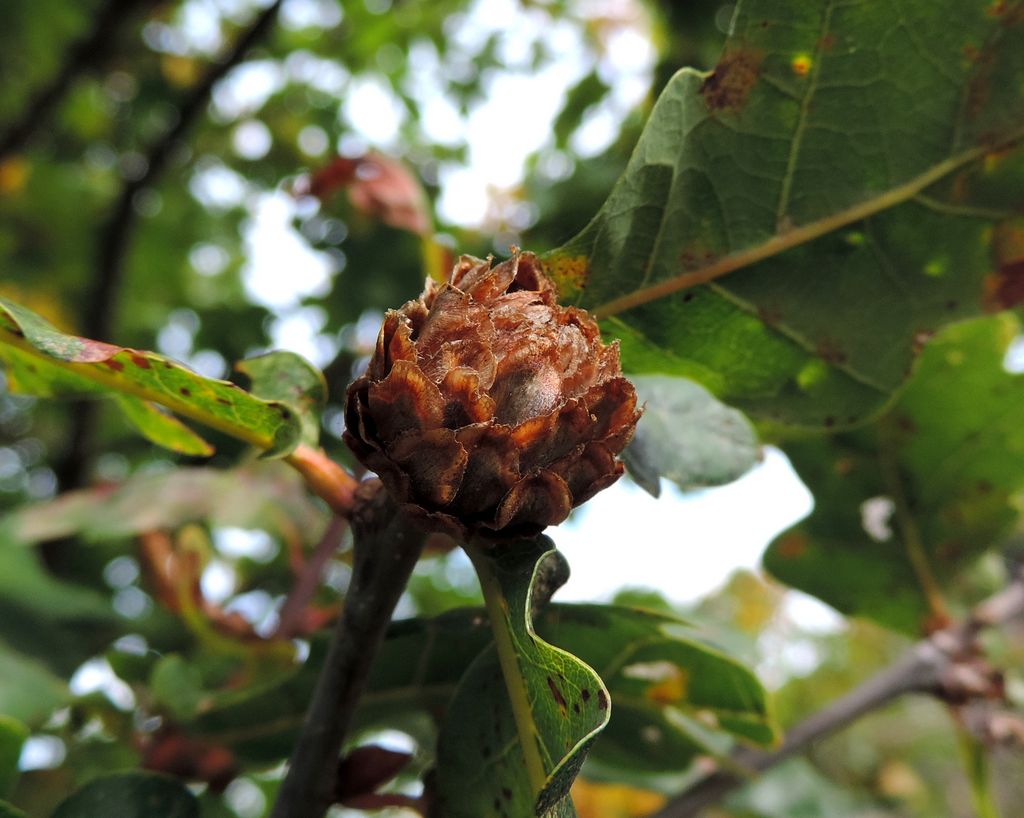
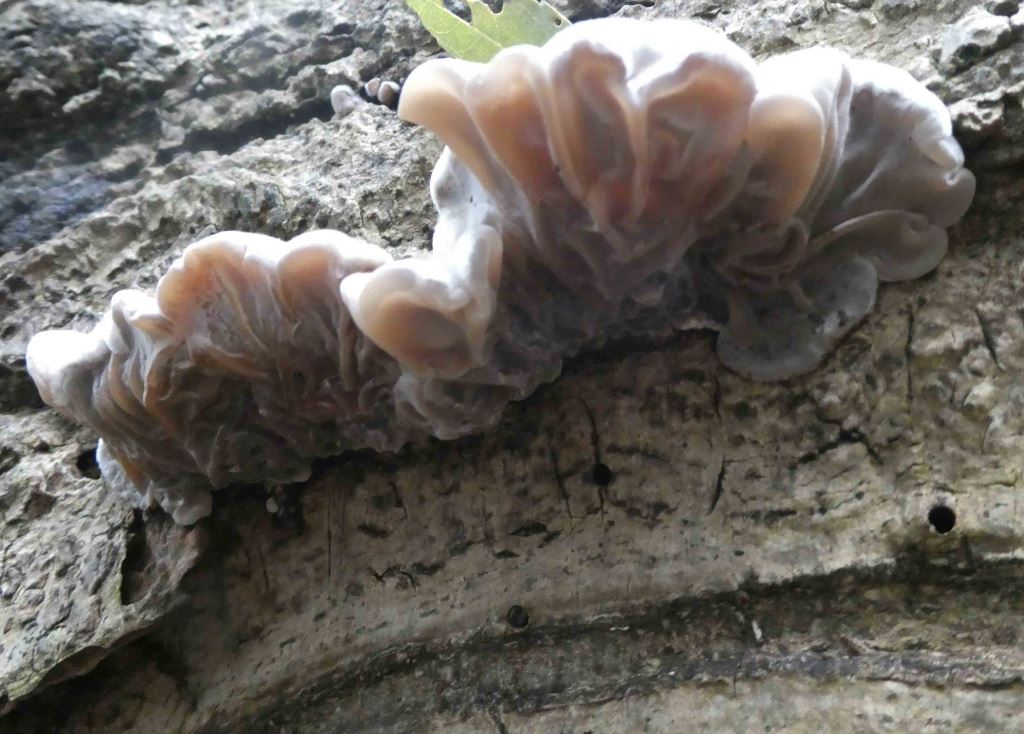
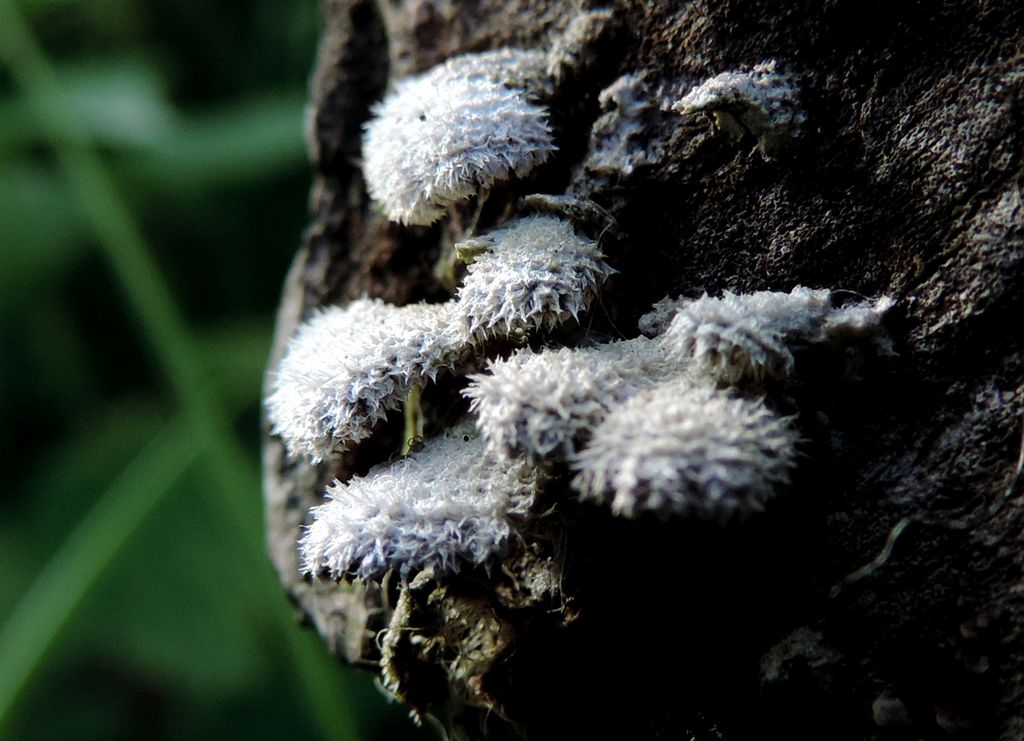
Pictures by Rob Stallard and Jim Wills
